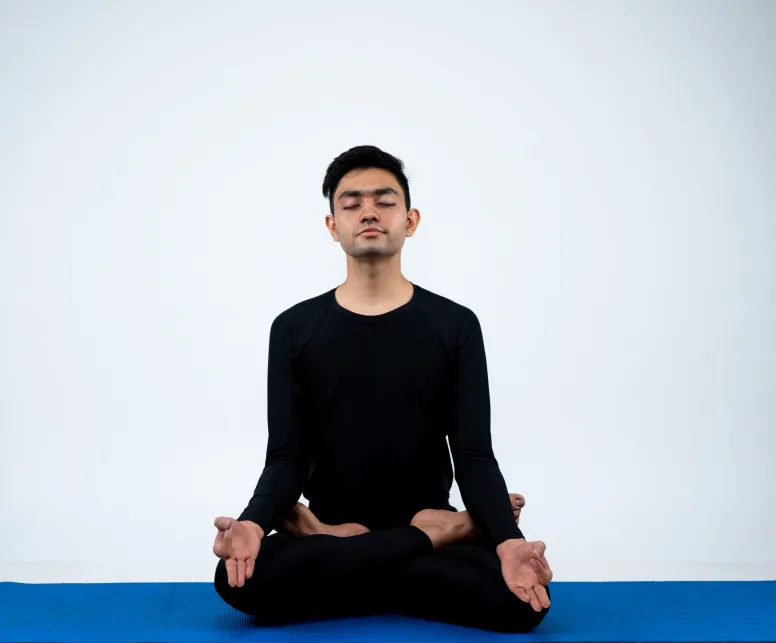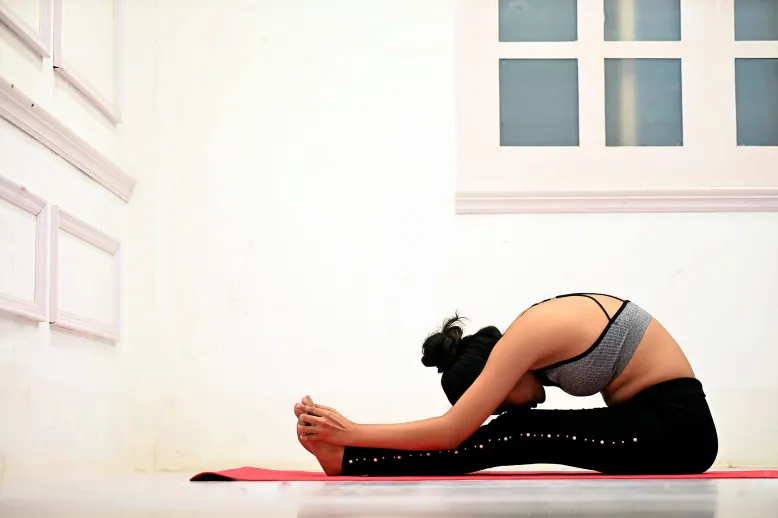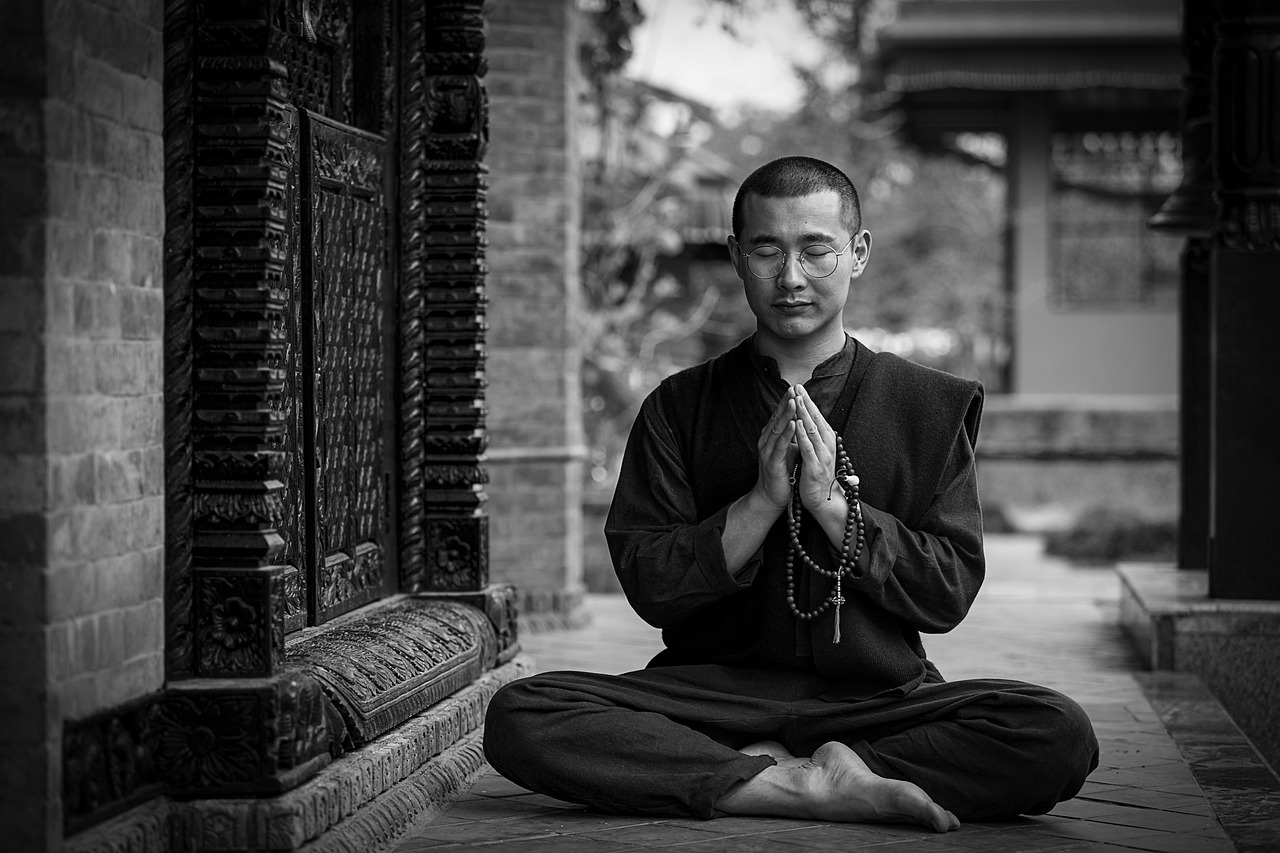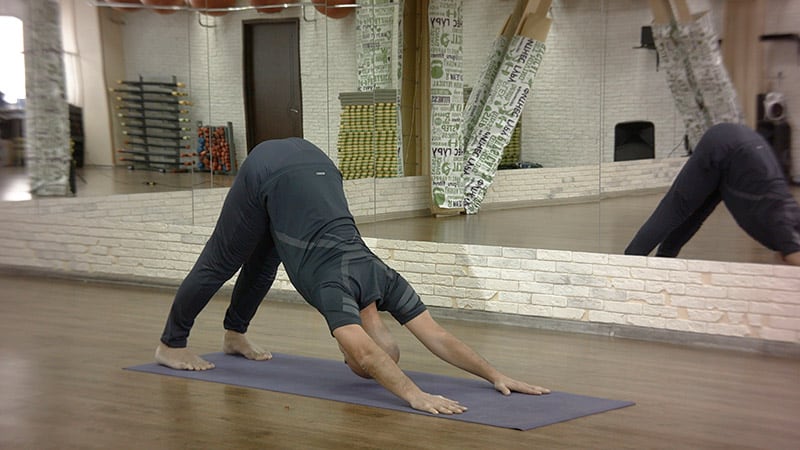Padmasana, commonly known as the Lotus Pose, is a meditation pose rich in history and symbolism.
Its roots may be traced back to ancient India, even before Hatha yoga was developed. Padmasana is more than just a physical stance in Hindu, Tantric, Jain, and Buddhist traditions; it serves as the basis for spiritual investigation and enlightenment.
The Origins and Symbolism
To comprehend the importance of Padmasana, one must investigate its complex cultural and spiritual origins. The lotus flower, from which the position takes its name, has deep importance in many cultures and faiths. In Hinduism and Buddhism, the lotus represents purity, enlightenment, and the soul’s path toward divine realization.
According to legend, the great sage Patanjali formalized the concepts of yoga in his foundational treatise, the Yoga Sutras, thousands of years ago. Padmasana is mentioned in this ancient literature as one of the contemplative stances suitable for the practice of dhyana, or profound concentration. It is stated that sitting in Padmasana promotes the flow of energy throughout the body, resulting in heightened awareness and tranquility.
Benefits of Padmasana
While Padmasana promotes calm and inner quiet, its advantages go beyond mental peace. Here are some of the physical and mental advantages associated with doing Padmasana.
- Sitting in Padmasana aligns the spine, strengthens the back muscles, and improves overall posture.
- Padmasana improves flexibility in the hips, knees, and ankles, lowering the chance of injury and pain.
- tension reduction: Padmasana’s contemplative component soothes the mind, relieves tension and anxiety, and improves mental clarity and emotional balance.
- Padmasana is thought to awaken the body’s energy centers, or chakras, allowing for the free flow of prana (life force energy) and boosting overall wellness.
- Digestive Health: Padmasana’s gentle compression of the belly stimulates digestion, relieves digestive problems, and promotes a healthy metabolism.
Learn More: Benefits Of Padmasana
A Step-by-Step Guide To Padmasana
Padmasana may seem straightforward at first glance, but mastering it takes time, concentration, and attentive practice. To adopt Padmasana, perform these steps:
- Sit on the floor or a yoga mat with your legs stretched in front.
- Bend the right knee and bring the right foot to the left hip crease.
- Similarly, bend the left knee and bring the left foot to the right hip crease.
- Rest the hands on the knees, palms up, in chin mudra (thumb and index finger touching).
- Keep the back straight, the shoulders relaxed, and your eyes gentle. Breathe deeply and evenly.
Spiritual Connection
Beyond its physical advantages, Padmasana may lead to higher realms of awareness and spiritual investigation. As practitioners relax into the posture, they are advised to practice mindfulness, putting their attention within and watching the mind’s oscillations without judgment.
In yogic philosophy, the lotus blossom is often used to represent the path of self-discovery and spiritual enlightenment. Just as the lotus emerges from the dirty waters to blossom in immaculate splendor, the practitioner strives to transcend the limits of the ego and connect with their higher self.
Padmasana is more than just a physical position; it is a holy realm where the body, mind, and soul unite in perfect harmony. Padmasana offers a deep sensation of calm and release when practiced consistently and
with devotion.
The Importance of Padmasana in Modern Life
In today’s fast-paced world of incessant noise and distraction, Padmasana provides a much-needed respite for the tired spirit. Amid the rush and bustle of everyday life, taking a few minutes to sit in Padmasana may bring a feeling of calm and inner stability.
Furthermore, Padmasana’s principles of patience, mindfulness, and self-awareness are important tools for managing contemporary life’s problems with grace and serenity. Whether it’s coping with stress at work, establishing healthy relationships, or discovering meaning and purpose in life, the lessons taught on the yoga mat may be applied to many aspects of life.
Final Thought
In a world where turmoil reigns supreme and tranquility seems unattainable, Padmasana serves as a timeless reminder of the power of quiet and inner calm. This holy position, rooted in ancient tradition yet relevant to the challenges of contemporary life, allows us to travel inside, connect with our real nature, and explore the vast depths of the human spirit.
As we sit in Padmasana, let us recall the wisdom of the millennia and the transformational power that exists within each of us. In the stillness of the lotus stance, may we find consolation, strength, and a deep feeling of connectedness to the wide expanse of reality. Allow Padmasana to be more than simply a physical position, but a gateway to the limitless possibilities that await us on the journey of self-discovery and enlightenment.
What is the Padmasana of Buddha?
The Padmasana of Buddha is a Buddhist icon depicting the Buddha in the Lotus Pose, a seated meditation posture. This posture, symbolizing inner contemplation and tranquility, represents the Buddha’s profound realizations and teachings on liberation from suffering. The Padmasana serves as a reminder of the wisdom and compassion embodied by the Buddha, inspiring practitioners to cultivate mindfulness, compassion, and wisdom in their spiritual journey.
How many types of Padmasana are there?
Padmasana: A Comprehensive Overview
Padmasana, or the Lotus Pose, is a classic seated posture with crossed legs and feet on opposite thighs.
Variations and modifications cater to different levels of flexibility and comfort.
• Common variations include Siddhasana (Adept’s Pose), Svastikasana (Auspicious Pose), Ardha Padmasana (Half Lotus Pose), Baddha Padmasana (Bound Lotus Pose), Uttitha Padmasana (Raised Lotus Pose), and Paripurna Padmasana (Full Lotus Pose).
• These variations cater to different levels of practitioners and provide options for adapting the posture according to individual flexibility, anatomy, and comfort.
• Consistent practice and patience are essential for deep expressions of the pose.
How many minutes is Padmasana?
Padmasana, or the Lotus Pose, is typically held for 1 to 5 minutes during meditation or pranayama, but some practitioners may hold it longer. Beginners should gradually increase the duration over time as their flexibility improves. Starting with shorter holds and gradually increasing to longer ones can prevent strain or discomfort. Including gentle stretches and warm-up exercises before attempting Padmasana can also help prepare the body and reduce injury risk.
What are the side effects of padmasana?
Padmasana, or Lotus Pose, is a pose that requires significant flexibility in the hips, knees, and ankles. It can cause knee discomfort, ankle strain, hip discomfort, lower back strain, nerve compression, digestive discomfort, and high blood pressure. To avoid these side effects, warm up the body with gentle stretches, avoid forcing the legs into the Lotus position, use props to support the knees and hips, focus on proper alignment, and gradually increase flexibility over time. Consult a qualified yoga instructor or healthcare professional if you have any concerns or pre-existing health conditions before practicing Padmasana. This pose can also cause nerve compression, digestive discomfort, and potentially increased blood pressure.





No Comments